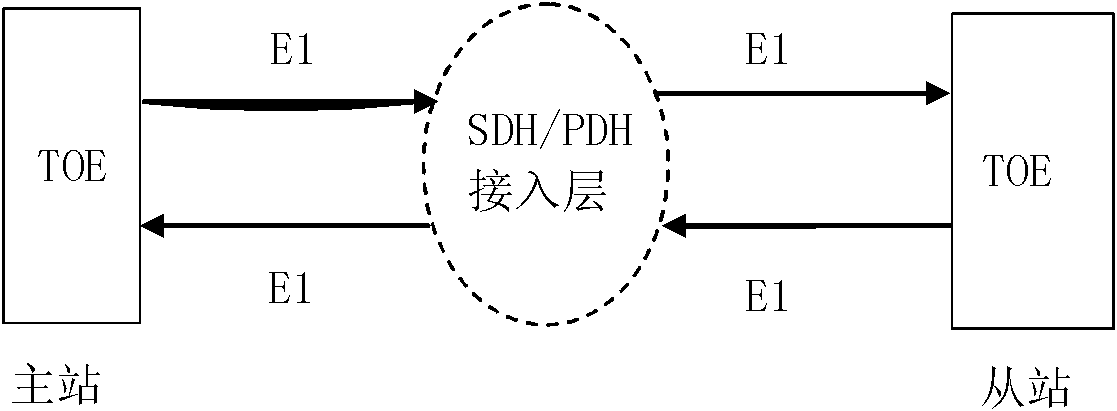E1 link-based bidirectional time-frequency synchronous transmission method and master-slave device
A main device, time-frequency technology, applied in the field of communication, can solve the problems of PTP data packet timing accuracy decline, affecting system performance and synchronization accuracy, Ethernet data packet delay uncertainty, etc. Protocol conversion, effect without caching
- Summary
- Abstract
- Description
- Claims
- Application Information
AI Technical Summary
Problems solved by technology
Method used
Image
Examples
Embodiment Construction
[0043] see Figure 1~3 .
[0044] The two-way time-frequency simultaneous interpretation process of the present invention is:
[0045] A. The master station sends a time synchronization frame to the slave station, and the master station records the time stamp T1 of the synchronization frame sending packet and inserts it into the synchronization frame;
[0046] B. The slave station receives the synchronization frame sent by the master station, records the packet receiving time stamp T2, and obtains the time stamp T1 from the synchronization frame;
[0047] C. The slave station sends a delay request frame to the master station, and records the time stamp T3 of sending the delay request frame;
[0048] D. The master station receives the delay request frame sent by the slave station and records the received packet timestamp T4, and the master station inserts the T4 timestamp into the delay feedback frame and sends it to the slave station;
[0049] E. The slave station receives ...
PUM
 Login to View More
Login to View More Abstract
Description
Claims
Application Information
 Login to View More
Login to View More - R&D
- Intellectual Property
- Life Sciences
- Materials
- Tech Scout
- Unparalleled Data Quality
- Higher Quality Content
- 60% Fewer Hallucinations
Browse by: Latest US Patents, China's latest patents, Technical Efficacy Thesaurus, Application Domain, Technology Topic, Popular Technical Reports.
© 2025 PatSnap. All rights reserved.Legal|Privacy policy|Modern Slavery Act Transparency Statement|Sitemap|About US| Contact US: help@patsnap.com



